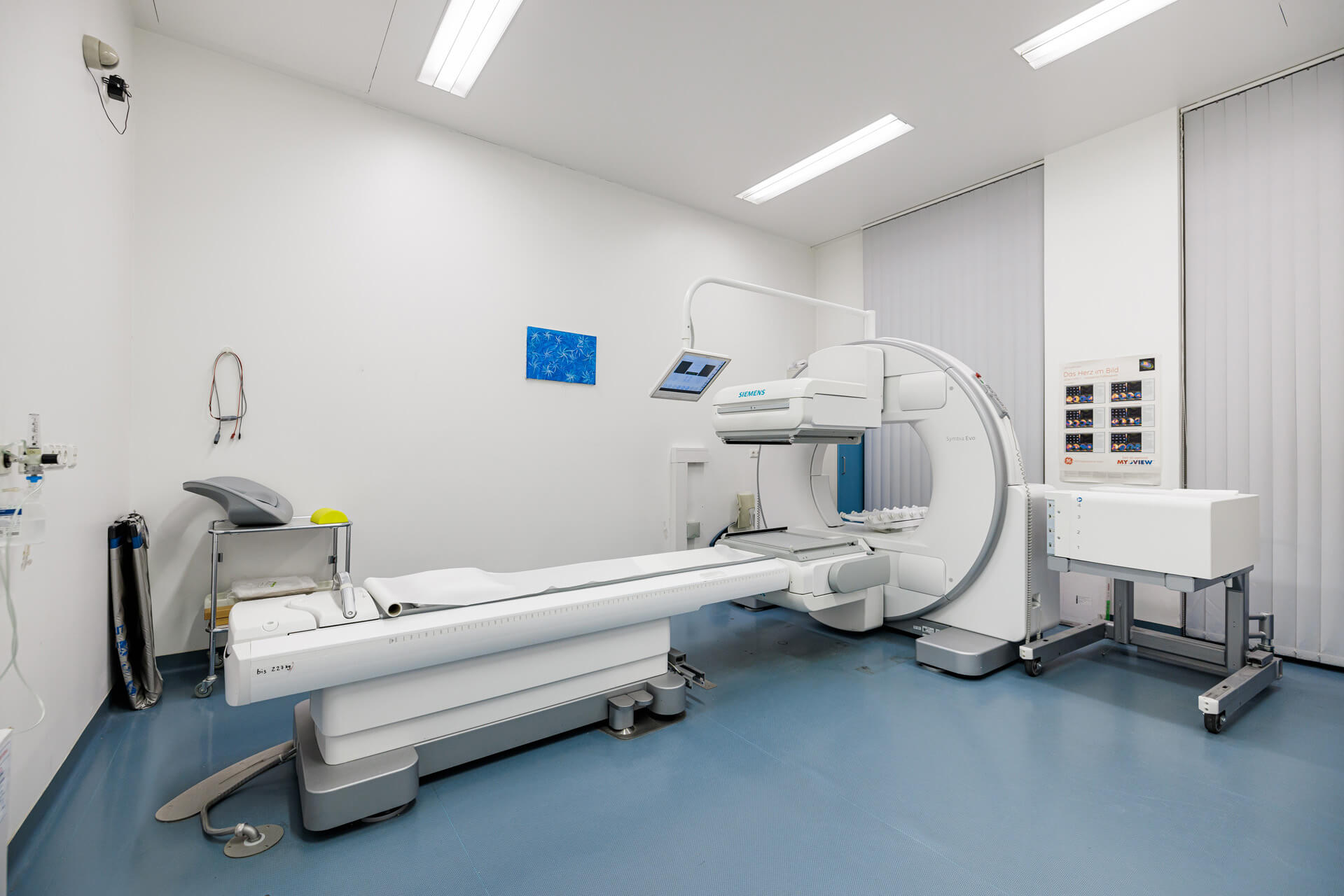Scintigraphy of the stomach
Disorders of gastric function can cause a variety of abdominal complaints. In about half of the patients, a gastric emptying disorder can actually be detected. Gastric scintigraphy can be used to examine gastric function using a radioactively labeled test food and to diagnose a disorder of gastric emptying.
approx. 60 min
Duration of examination
up to 50
Of the patients with emptying disorders of the stomach with abdominal abdominal pain.
non-invasive
simple, surgery-free implementation
Where can you have a gastric scintigraphy performed in Munich?
We offer the nuclear medicine examination of gastric scintigraphy at our location in the Rotkreuzklinikum in Nymphenburgerstr. 163 an. For compulsorily insured persons, we require a valid referral slip.

When is gastric scintigraphy useful?
About 10 to 20% of the population has abdominal discomfort. These include bloating, flatulence, nausea, stomach pain, vomiting or diarrhea. The reason for these problems is often found in gastric emptying disorder. Stomach function can also be disturbed in the context of diseases such as diabetes mellitus (sugar disease), connective tissue diseases (e.g. scleroderma), muscle diseases, stomach inflammation or scarring, the so-called “irritable stomach”. It is also possible that the function is impaired by medication (e.g. antidepressants) or as a result of surgery.
Gastric scintigraphy is noninvasive and a simple, quick examination to perform. The load remains low and it can also be repeated if necessary, for example as part of a therapy check.
How does gastric scintigraphy work?
You will be given a lightly radioactively labeled test food (oatmeal porridge). The stomach is a storage organ that can temporarily hold larger amounts of food. Larger food components are broken down in the lower part of the stomach and then slowly released into the small intestine for further utilization. The gamma camera captures images of the passage of the test food through its stomach into the intestine for over an hour.
Gastric scintigraphy may show normal timely emptying, too rapid emptying, or delayed emptying. Too rapid gastric emptying may be a consequence of surgical procedures, for example, after pyloroplasty, fundoplication. Delayed gastric emptying in patients indicates long-term diabetes mellitus, scleroderma (= hardening of the skin and organs) or scarring after inflammation.
What do you need to know before the treatment?
You must fast for at least 8 to 10 hours before the examination so that the stomach is completely emptied. Smoking should also be avoided during this time.
The examination takes place in the morning around 9 am.
Diabetics should inject the amount of insulin adjusted for them about 30 minutes before the examination. The blood glucose before the start of the examination should be < 200 mg/dl.
What is the procedure for a gastric scintigraphy at Radiologie München?
At the start of the examination, you will be given a lightly radioactively labeled oatmeal porridge, which you must eat completely. Unfortunately, this test food is not a treat, but only this standardized test food ensures a reliable evaluation of the examination.
They are then placed on the gamma camera, which continuously captures images of the gastric emptying of the test food over 60 min. The examination is then evaluated and our nuclear medicine physician discusses the findings on site.
What are the risks and side effects of gastric scintigraphy?
The test dish consists of oatmeal and is unfortunately a bit bland in taste. Radiation exposure from the marker in the test specimen is minimal. It is significantly below the annual natural radiation exposure in Germany.


